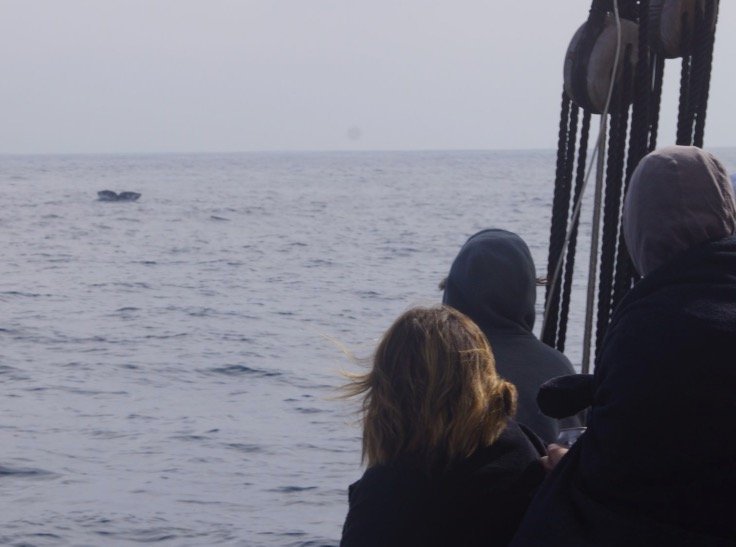San Diego is a world-class destination for seeing majestic whales in their natural habitat. To ensure you have an incredible and memorable experience, a little preparation goes a long way. Understanding what to expect, how to prepare, and how to act respectfully will help you get the most out of your San Diego whale watching tour. These essential tips will guide you from booking your trip to the moment you spot your first whale.
Setting Realistic Expectations for Your Tour
The most important thing to remember is that you are entering a wild and unpredictable environment. Whales operate on their own schedule, and a sighting is a privilege, not a guarantee. While tour operators use their expertise to find them, sometimes the whales are simply not in the area or not showing themselves.
Go into the experience with an attitude of adventure. Enjoy the boat ride, the fresh sea air, and the possibility of seeing other marine life like dolphins and sea lions. Having a flexible mindset ensures you will have a good time, whether you see a pod of whales or not.
Different whales migrate through San Diego’s waters at different times of the year. Knowing which species you are likely to see can help manage your expectations and make the trip more exciting. For instance, you shouldn’t expect to see a blue whale on a winter tour.
| Season | Common Whale Species |
|---|---|
| Winter (Dec – Apr) | Gray Whales |
| Summer (Jun – Sep) | Blue Whales, Fin Whales |
| Fall (Sep – Nov) | Humpback Whales |
How to Dress for Success on the Open Water
Even if it’s a warm, sunny day in San Diego, the temperature on the ocean can be 10-15 degrees cooler. The wind can also make it feel much colder than it is on land. The key to staying comfortable is dressing in layers.
You can always remove a layer if you get too warm, but you can’t add one you didn’t bring. Start with a base layer, add a sweater or fleece, and top it off with a waterproof or windproof jacket. This simple strategy will keep you comfortable no matter what the weather does.
Beyond layers, a few other items are essential for a safe and enjoyable trip. Being prepared will allow you to focus on spotting whales instead of being uncomfortable.
- Non-slip shoes: Boat decks can get wet and slippery. Wear shoes with good traction, like sneakers or boat shoes.
- Sun protection: The sun’s reflection off the water is intense. Bring sunglasses, sunscreen, and a hat to protect yourself from UV rays.
- Waterproof jacket: A light waterproof jacket will protect you from sea spray and any unexpected rain showers.
Always check the marine forecast before you leave. It provides a more accurate picture of the conditions you will face on the water compared to the inland weather report.
Preparing for and Preventing Seasickness
Nothing can ruin a whale watching trip faster than motion sickness. If you are unsure whether you get seasick, it’s best to prepare for the possibility. The ocean can be unpredictable, and even those with strong stomachs can feel queasy on a rough day.
For those prone to motion sickness, the best time for whale watching in San Diego is typically the morning. The winds are often calmer, leading to a smoother ride. Afternoon trips can be bumpier as the wind tends to pick up.
Taking preventative measures before you even step on the boat is the most effective strategy. You can try over-the-counter medications like Dramamine or Bonine, but be sure to take them an hour before your tour starts. Non-medicinal options like pressure point wristbands or ginger chews can also be very helpful for settling your stomach.
If you start to feel sick, stay on the deck in the fresh air and keep your eyes on the horizon. This helps your brain and inner ear sync up, which can reduce the feeling of nausea.
Respecting the Whales and Their Environment
When you are on a whale watching tour, you are a visitor in the whales’ home. It’s crucial to observe them in a way that is safe and respectful of their natural behaviors. Responsible tourism ensures that these animals are not stressed or harmed by our presence.
Boats can be loud and disruptive to marine life. The noise from engines can interfere with how whales communicate, navigate, and find food. This is especially true for mothers with young calves, who can be very protective.
To minimize your impact, a good rule of thumb is to limit your observation time. If you are on a private vessel, do not spend more than thirty minutes with any single group of whales. This gives them space and allows them to continue their routine without prolonged interference. Trust your tour guide to follow these best practices.
Why Choosing a Reputable Guide Matters
Not all tour companies are created equal. A reputable company will prioritize the well-being of the marine animals above all else. They are knowledgeable about local wildlife and are committed to conservation and education.
Look for tour operators who are open about their commitment to following federal guidelines. In the United States, the Marine Mammal Protection Act sets strict rules for how close vessels can get to whales, which is typically 100 yards. A responsible captain will never chase or harass an animal to get a closer look.
Before booking a San Diego whale watching tour, do a little research. Read reviews and check if the company has naturalists on board to provide educational information during the trip. A tour that is both thrilling and educational offers the best value and experience.
Frequently Asked Questions about Whale Watching
What is the best month for whale watching in San Diego?
The best time depends on what you want to see. For gray whales, visit between December and April. For the giant blue whales, the largest animals on Earth, the peak season is from June to September.
Can you guarantee I will see a whale on my tour?
No reputable company can guarantee a whale sighting. These are wild animals with their own patterns, and their presence can never be promised. However, San Diego has such a healthy and active marine environment that sightings are very common.
How close can the boats get to the whales?
Federal law requires that boats stay at least 100 yards away from most whales. This is to avoid stressing the animals or interfering with their behavior. Often, curious whales will approach the boat on their own, creating an unforgettable close encounter.
What should I bring on a whale watching tour?
Besides dressing in layers, you should bring a camera or smartphone to capture the moments. Binoculars are also a great idea for getting a closer look. Don’t forget water and any personal seasickness remedies you may need.
Is it better to go whale watching in the morning or afternoon?
Morning tours often have calmer waters, which is better for those prone to seasickness. However, whales can be active at any time of day, so excellent sightings can happen on both morning and afternoon trips.






Leave a Comment